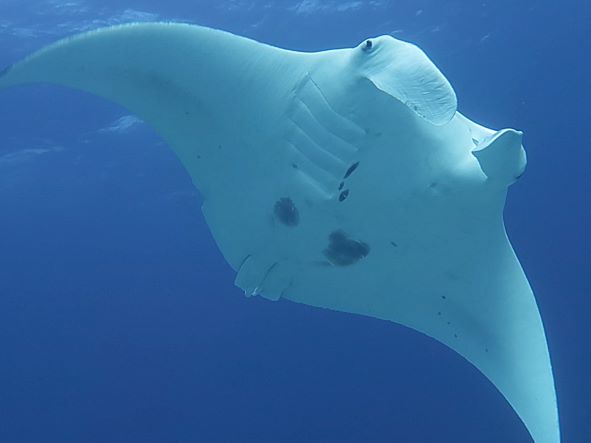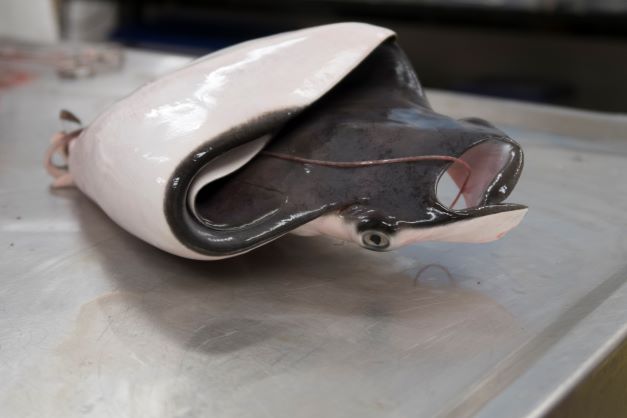Written by Dr Christine Dudgeon.
Southeast Queensland and Moreton Bay are home to a substantial diversity of sharks and rays, which have been the focus of key research being conducted over the past 20 years at The University of Queensland's Shark and Ray Lab.
One group of animals that have been of particular interest over the last 12 years are the devil rays.

Image credit: Dr Asia Haines
There are currently nine species within the genus Mobula - with the largest reaching 'wingspans' of five to seven metres - best known as manta rays.
Manta rays previously had their own genus, Manta, but a redescription of the family Mobulidae in 2018 lumped them in with the other Mobula species.
Additionally, some other taxa were lumped, causing a bit of confusion and concern about downstream conservation implications.
All mobulids are threatened and are listed on CITES Appendix II. Our initial research focus was on the reef manta ray, M. alfredi, in the waters off Minjerribah/North Stradbroke Island to Lady Elliot Island in the southern Great Barrier Reef.
The research program contained a considerable citizen science component so was labelled 'Project Manta' for engagement.
Dozens of research outputs, supporting several PhD students, have come from this highly collaborative project, addressing the direct conservation issues for the species as well as more fundamental research questions on their biology, ecology and evolution.
An example of one large-scale collaboration comes from UQ PhD alumnus Dr Asia Haines.
One of Dr Haines' PhD chapters brought together over 50 research groups from around the globe to investigate population structure in manta rays using photographic identification databases of the rays' unique spot patterns.
In recent years researchers have turned their attention to one of the smallest devil rays.

Image credit: Dr Christopher Lawson.
In response to lethal shark attacks in 2017, New South Wales Fisheries deployed shark nets in northern NSW, resulting in over 60 short-horn pygmy devil rays being captured and killed in these nets.
These animals only reach one metre in wingspan, and many of these were pregnant females, and had never been recorded in this area.
The actual species was also difficult to define, given its previous redescriptions, and work on these animals resulted in a resurrection of a separate species, M. eregoodoo.
Population genetic work is ongoing across northern Australia through to Sri Lanka to delineate the species' distribution and overlap with its closely related congener M. kuhlii.
The third major project for devil rays is an international collaboration, focusing on fisheries impacts and conservation initiatives of three heavily fished mobula rays in Indonesia and Philippines.
Researchers are using population genetics tools to identify how many fishing locations are contributing to landed animals in fish markets, and electronic tagging to assess post-release survival rates for devil rays that are caught in fishing nets.
This work is being undertaken together with UQ PhD alumnus Dr Fahmi based at the Indonesian Research Institute and the international non-governmental organisations Manta Trust and Large Marine Vertebrates Research Institute Philippines (LAMAVE).
The Shark and Ray Lab is based in the School of Biomedical Sciences at UQ under the leadership of Honorary Professor Mike Bennett, along with UQ collaborators in the Molecular Fisheries Laboratory, Honorary Associate Professor Jennifer Ovenden and Dr Christine Dudgeon, the School of Biological Sciences, Associate Professor Ian Tibbetts and Professor Cynthia Riginos, and the School of Mathematics and Physics, Professor Anthony Richardson, along with many national and international collaborators, including Associate Professor Kathy Townsend, now at the University of Sunshine Coast.



